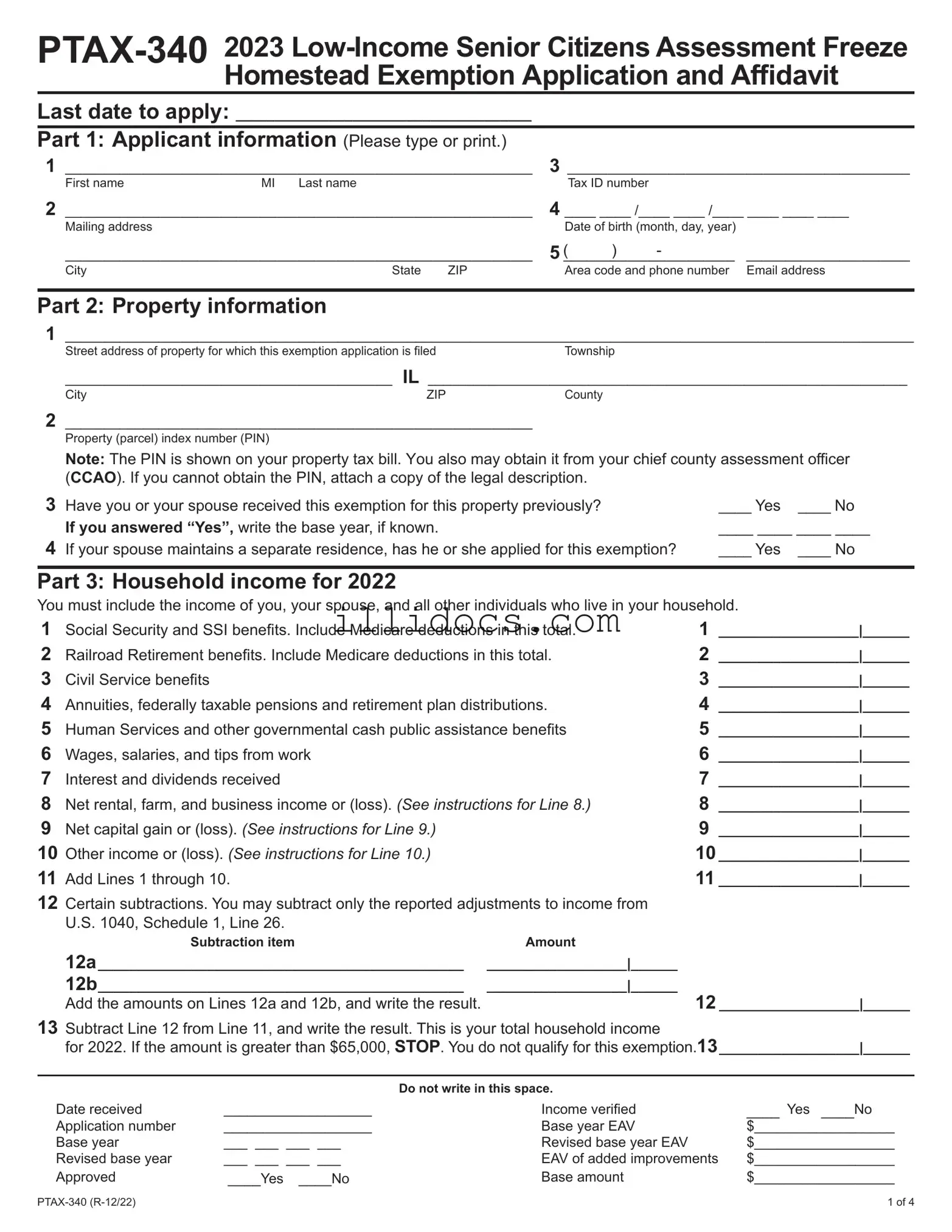What is the Illinois PTAX-340 form?
The Illinois PTAX-340 form is an application for the Senior Citizens Assessment Freeze Homestead Exemption. This exemption helps qualified seniors by freezing the assessed value of their property, preventing increases due to inflation. This can lead to significant savings on property taxes. It is important for seniors who meet certain criteria to apply for this exemption annually.
Who is eligible to apply for the PTAX-340 exemption?
To qualify for the PTAX-340 exemption, applicants must be 65 years or older during the year of application. Additionally, their total household income for the previous year must be $65,000 or less. The property must be used as the applicant's principal residence, and they must have a legal interest in the property. Special provisions exist for surviving spouses and residents of certain health facilities, allowing them to apply even if they do not currently reside at the property.
What is considered household income for the PTAX-340 application?
Household income includes the income of the applicant, their spouse, and anyone else living in the household. This encompasses a variety of sources, such as wages, pensions, Social Security benefits, and rental income. It is essential to report all sources of income accurately, as the total must not exceed $65,000 to qualify for the exemption.
How do I fill out the PTAX-340 form?
When completing the PTAX-340 form, start by providing your personal information, including your name, mailing address, and date of birth. Next, detail the property for which you are applying, including the address and parcel index number. Finally, report your household income, ensuring you include all necessary income sources as outlined in the form's instructions. Be sure to sign and date the affidavit section at the end of the form.
When is the deadline to submit the PTAX-340 form?
The deadline to submit the PTAX-340 form varies each year, so it is crucial to check the specific due date printed on the form. Generally, applications must be filed with the Chief County Assessment Officer (CCAO) by the specified date to be considered for that tax year. Late submissions may result in ineligibility for the exemption.
What happens if my household income exceeds $65,000?
If your total household income exceeds $65,000, you will not qualify for the Senior Citizens Assessment Freeze Homestead Exemption. In such cases, it is advisable to review your income sources and see if any adjustments can be made. However, if your income consistently exceeds this threshold, you may need to explore other forms of property tax relief that might be available.
Will my personal information remain confidential when I apply?
Yes, the information provided on the PTAX-340 form is confidential. It can only be used for official purposes related to the assessment and taxation process. Your privacy is protected under Illinois law, ensuring that your personal details are not disclosed without proper authorization.
What should I do if I have questions about the PTAX-340 form?
If you have questions or need assistance with the PTAX-340 form, it is best to contact your Chief County Assessment Officer (CCAO). They can provide guidance and clarification on the application process, eligibility requirements, and any additional documentation you may need to submit. Don't hesitate to reach out for help to ensure your application is completed correctly.
